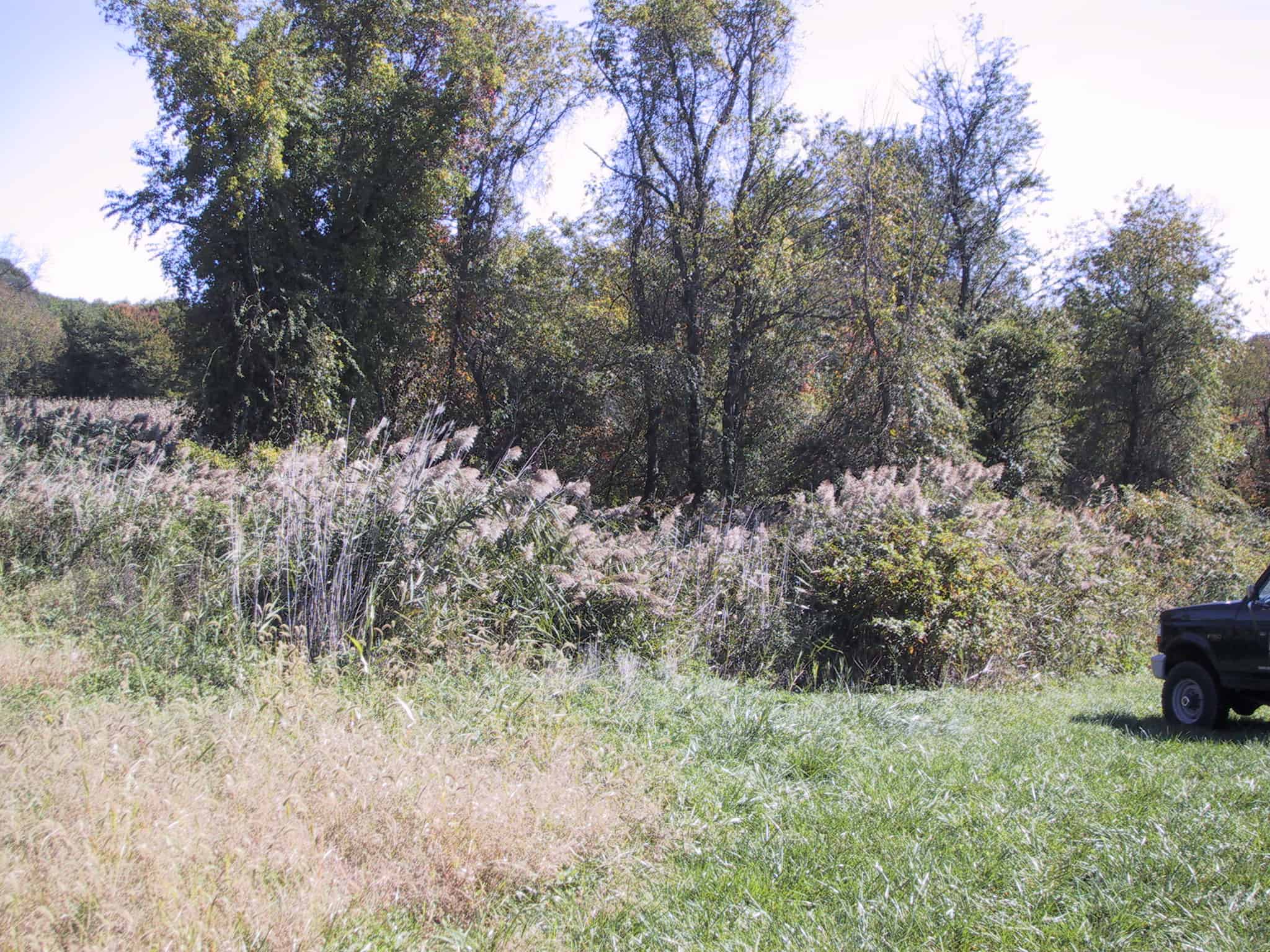Crow’s Nest: What a couple decades can do
By Daniel Barringer, Preserve Manager.
It’s time for the way-back machine. I have digital photos going back two decades and sometimes I stumble upon something that puts our work in perspective. When giving talks about managing invasive plants I often give as an example a patch of invasive giant reed (Phragmites australis) that was growing here and how over several years I was able to reduce the time it takes each year to manage the population—from a whole day to about five minutes per year. I use it as an example of successful management; we may not eliminate an invasive species from a site but it is possible to make it a minor player, and management becomes low-level maintenance. In other words, with management, the invasive species—though perhaps still present—is not currently invasive.

Photo: Daniel Barringer
Above, October 2002. Below, August 2021.

Photo: Daniel Barringer
You can see a number of changes on the site. Note that I parked the current preserve truck in about the same place as the 1992 pickup had earlier been parked. (For the youngsters or those who’ve forgotten, that was a time when trucks were still real trucks.)
Some of the black cherry trees (Prunus serotina) have declined; that’s not entirely surprising since it’s an early-successional species that doesn’t live as long as some of our other species of forest trees, and in our region it is a species that is less likely than others to thrive under current trends of climate change. I love the wood of black cherry and it is very valuable for wildlife; I hope we will always have some here but most of these trees are past their prime.
But in the foreground, the monoculture of phragmites with its feathery flower inflorescences has given way to a diverse community of species adapted to wet sites: jewelweed, swamp milkweed, white vervain, New York ironweed, various goldenrods, sweet autumn clematis, Joe Pye weed, gray dogwood, wild grape, red oak, and black walnut, to name a few. None of these were planted; they just grew from natural seed sources because competition from the giant reed was greatly reduced. There are a few other invasive plants also present: multiflora rose, Canada thistle, and still a couple stems of phragmites. But overall it is a far more diverse plant community that we started with, and one which I don’t think would have grown there if we hadn’t managed the phragmites.
This experience is helping guide us as we begin to manage phragmites on lands we just added to the preserve last year. As I said to the volunteer who started a dialogue about phragmites (thanks, Colleen!) it’s not that the phragmites itself has no wildlife value, it’s just that other, more diverse communities of native plants are likely to have characteristics we value more—for improved wildlife food and habitat resources, resilience, and beauty.
